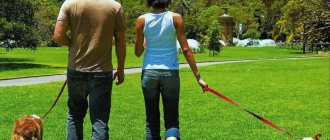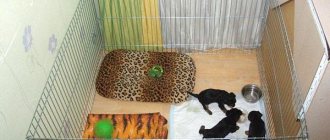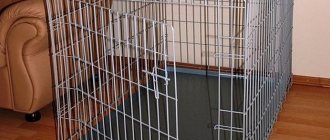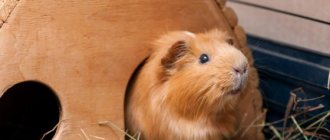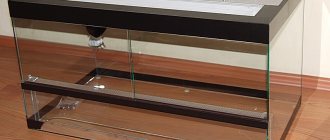For service breed dogs, the conditions of their maintenance are very important. The German Shepherd feels best if it lives on the street or in an enclosure, and not in an apartment. But at the same time, it is very important that the animal has a place where it can hide from bad weather or rest. That is why if a shepherd dog lives in the yard of a private house, you need to make sure that it has a strong, reliable booth of suitable size for the pet.
Necessity of a dog kennel
Many owners of German Shepherds get their pets to guard their garden. This involves keeping the dog in the yard or enclosure all year round. In order for the animal to feel comfortable, it needs a place where the dog can rest and hide from the cold, precipitation or scorching summer sun , and a warm and cozy kennel is best suited for this.
In addition, the presence of a kennel on the site will relieve the owner of a shepherd from the need to let the dog out into the yard, and when it has walked, take it into the house. The pet decides for itself when it should leave the kennel and when it should come back.
This gives the shepherd self-confidence and has a beneficial effect on the psyche and protective qualities of the animal.
In addition, a good-quality and beautiful dog house, made according to an original design, can also become an excellent decoration for the yard.
Types and how to choose the optimal project
The owner of the animal has the right to independently choose the design and appearance of the kennel for his pet. Manufacturers offer booths of a wide variety of shapes, often in fantasy shapes. For example, you can buy a booth in the shape of a mansion or even a royal palace. Another popular solution is to style the kennel to match the design of the dog owner’s home. Many shepherd owners believe that such a booth looks very original and interesting.
However, when choosing a suitable design project, you must first remember that the doghouse must first and foremost be comfortable and functional. If it consists of several parts or has an overly complex design, then the animal may not feel very comfortable in such a “house”. And such a kennel can take up a lot of space. This may be appropriate in a large country mansion, but is not very suitable for the small yard of an ordinary private house.
What types of dog kennels are there and how to choose the most suitable one for your pet? Below are 4 options with photos and brief descriptions.
Single-pitch
The roof in such booths consists of a horizontal surface set at a slight angle. This design allows rainwater to flow down, but at the same time gives the shepherd the opportunity to use the roof as an observation point, from where it is very convenient for the pet to monitor what is happening on the site.
Gable
Two halves of such a roof, placed end-to-end, form an acute angle. This ensures faster water drainage and melted snow removal, which increases the wear resistance of the kennel and extends its service life.
With vestibule
Such a booth retains heat better due to an additional compartment that prevents cold air or precipitation from entering the room.
With an aviary
A kennel equipped with an enclosure gives the shepherd greater freedom of movement. In addition, this design prevents the animal from leaving the territory it protects without permission.
If you are going to breed German shepherds, then choose a booth equipped with an enclosure. In it, the bitch and her puppies will feel comfortable and at the same time be completely safe.
The same design is also suitable for keeping several dogs. You also need to take into account the climatic characteristics of your region. For example, for areas where it is often too cold or windy. In this case, a booth with a vestibule would be an ideal option. And if your region has high humidity and often rains, then a kennel with a gable roof would be the best choice.
Features: how to maintain?
Depending on where the pet will be for most of the day, conditions for its maintenance are created. City apartments and country houses have their own rules, but there are also general rules for housing a dog.
In a city apartment
Large service breed dogs are kept in both small-sized apartments and large-area housing. Of course, the second option is preferable. But apartments with small rooms are quite suitable for keeping shepherd dogs. Considering that an adult dog sleeps on its bedding most of the day, its presence will not embarrass the residents. The main thing is to determine places for sleeping and feeding at home :
- choose a place for the mattress where the pet will not disturb anyone and will not be disturbed while resting;
- Do not place the bed in a draft or near a central heating radiator.
A bowl of water should be constantly available, but installed so that residents do not bump into it, for example in a corner. Use special stands where bowls are placed . The stands are adjustable in height, which is very convenient for the dog.
It is mandatory to walk an adult dog at least twice a day, regardless of the weather. For a puppy - more, and the younger the puppy, the more often he is walked. You need to be prepared for the fact that a dog, especially a young one and not properly trained, can chew furniture, shoes and other things.
And, of course, do not forget that German Shepherds shed twice a year or more . Daily cleaning of the apartment will become a chore, otherwise there will be wool not only on the floor, but also on the furniture, clothes and in the air.
Important! Apartment keeping of such large breeds of dogs as a shepherd can bring some inconvenience to the life of not only the owners, but also the animal, so it is extremely important to approach the issue of allocating space for the pet and organizing the entire space as rationally as possible.
In a private house
If it is expected that the dog will stay in the house most of the day and go out for walks when necessary, the same conditions are created for it as in the apartment. The advantage of country life is the ability to let your dog out into the yard at any time. A prerequisite is the presence of a strong fence around the local area, beyond which the dog cannot go.
An aviary in the yard and a warm booth will increase the pet’s comfort . During the day, the dog, while in the yard, will be able to hide from both bad weather and prying eyes. The presence of a kennel does not exclude the possibility that the owners will take the pet into the house at night.
Free range also has its disadvantages, especially if there are flower beds and beds in the yard. It is possible that the dog may damage the plantings. Therefore, you need to either fence off areas where the dog is not allowed to be, or designate a walking area for the dog.
Attention : regardless of whether the dog is constantly in the local area or is walked periodically, there must be a warning sign on the gate: “There is a service dog in the yard.”
On the street
The presence of a suburban area allows the dog to be placed in the yard:
- Free range with accommodation in a kennel. Allowed if the dog cannot leave the site.
- In a booth on a chain. Not a desirable option. Dog handlers cannot yet come to a common opinion on the possibility of keeping a German Shepherd on a chain, but most specialists, and even owners of “Germans,” have a negative attitude towards keeping a German shepherd on a chain.
- Staying in an enclosure equipped with a booth.
German Shepherds are quite capable of living outside, especially if they have been trained to do so from puppyhood. The thick undercoat prevents the dog from freezing, and constant exposure to fresh air will only improve the health of the animal .
Outdoors in winter
It is permissible to keep a German Shepherd outdoors all year round. Naturally, it is impossible to transfer an adult dog raised in an apartment to the cold immediately, since it needs a long period of adaptation to the cold.
For a dog raised outside the city and accustomed to being outside the home for a long time, a complete transfer to street keeping is acceptable. To prevent the pet from freezing, they equip him with an indoor enclosure and install an insulated booth. A spacious enclosure will give the shepherd enough freedom for active movement .
Winter is a time when you need to take extra care of a pet living outside. Despite the fact that an animal can eat snow to quench its thirst, you need to change the water in the bowl on time if it is frozen. The food is served warm enough so that the dog has time to eat the food before it gets too cold. If the thermometer drops too low, check to see if the dog is cold.
Reference! If it is known in advance that the German Shepherd will live outside in the winter, it is recommended to purchase a puppy that was born and spent the first weeks of its life in an enclosure. Such individuals have strong immunity and a short period of adaptation to life in the open air.
Can you keep it on a chain?
Theoretically, any service dog can be trained to be chained . This is convenient for the owners. The chain is fastened to the booth or on a movable block to the cable. But both cynologists and the owners themselves mostly express negative opinions about such restrictions on the freedom of German shepherds.
Psychological factor
Perceiving the leash as a betrayal towards itself, the animal begins to show excessive aggression. An unchained dog sometimes becomes uncontrollable. The anger of the chained shepherd becomes uncontrollable, and the animal begins to pose a danger to humans.
Physical discomfort
Constantly being on a chain is a severe limitation of movement . The dog suffers significant physical harm:
- sagging back;
- limb weakness.
There is a danger that the animal will become entangled in the tether. At best, this will lead to the dog not being able to reach bowls of water and food; at worst, asphyxia will occur if the chain gets wrapped around the neck.
From the point of view of security functions, it is easier for attackers to resist a shepherd if it is on a leash .
For reference : you can leave a German Shepherd on a chain only for a short time, when it is necessary for the sake of safety, for example, if the yard is visited by people unfamiliar to the animal.
Why does a dog eat its own excrement?
It is quite common for dogs to exhibit coprophagia, or eating their own excrement. There are prerequisites for this:
- Physiological:
- bitches cleaning up after their puppies is a manifestation of atavism: when animals are in the wild, such behavior contributes to the safety of the offspring;
- puppies learn from their mothers and begin to eat feces in the same way, continuing to do so as they grow up.
- Acquired as a result of an inadequate diet:
- lack of digestive enzymes;
- little protein in food;
- lack of vitamins B, K, minerals;
- general food shortage.
It may also be that the owner, in the process of raising the puppy, punished it too harshly for “big things” at home. The pet, possessing natural intelligence, will quickly realize that “hiding” the traces of a “crime” in this way means protecting itself from punishment. Later, this behavior simply becomes a habit.
Possible solutions to the problem
- Contacting a veterinary clinic to identify health problems associated with an incorrect diet. Changing your diet.
- More frequent walking if the dog cannot tolerate it and defecates at home, and then eats the excrement in order to hide the marks.
- Use of prohibiting commands and reward systems.
- Treating feces with pepper or special products sold in veterinary pharmacies.
Construction requirements
A kennel for a German Shepherd should be comfortable and cozy for your pet. The dog should not live in a box that is too cramped. But a “house” that is too spacious is also not suitable for her. The length of the dog kennel should be such that the shepherd can stretch out to his full height in it. But, given that the booth is heated in the cold season solely by the body heat of the pet itself, it is not recommended to make it too large.
Indeed, in this case it will be much more difficult to maintain the optimal temperature regime for the animal in the kennel. The following average kennel sizes are considered suitable for a German Shepherd:
- Length: from 120 to 125 cm. Moreover, if a vestibule is provided, then you will need to add another 20 or 30 cm to the length of the booth.
- Width: from 65 to 70 cm.
- Height: from 90 to 100 cm.
- Manhole: height - 60 cm, width - 40 cm.
The bottom of the booth should be slightly raised above ground level. This will make your shepherd’s “home” warmer and also more durable. A kennel installed directly on the ground will be more exposed to moisture. After all, all the water flowing from the roof will collect below, and this does not help extend its service life. Particular attention should be paid to the quality of the materials from which the booth will be made. They should not be flammable, nor resistant to moisture or temperature changes.
It is necessary that all materials are completely safe for the animal and, if possible, natural.
Maintenance in the cold season
Our climate is characterized by low average daily temperatures most of the year and severe frosts in the winter months. The German Shepherd is well protected from short-term exposure to cold, humidity and wind by its thick coat. But if kept outdoors constantly during the autumn-winter season, the animal can get hypothermia, leading to various diseases, as well as frostbite on the paws and ears. To reliably protect your German Shepherd from the cold, you will need an insulated booth.
The kennel room is heated by the animal’s body, so you just need to create conditions under which the temperature will be maintained as long as possible. To do this, wooden walls are made double, and a layer of thermal insulation is laid between them. Conventional building insulation - mineral wool or polystyrene foam - is suitable. For the same purpose, a second floor is made under the roof structure - the ceiling, and thermal insulation is also laid on it.
Option for a shepherd doghouse with a vestibule
The vestibule, which is an additional air barrier that separates the warm sleeping compartment from the cold street, will help to retain heat.
The entrance hole from the street and the internal one from the vestibule must be closed with a curtain made of thick material or tarpaulin. This will help protect the dog from sharp gusts of wind and eliminate the danger of heat blowing out of the kennel.
IMPORTANT: It will be difficult to retain heat if the shepherd's kennel is placed directly on the ground. It is necessary to make a wooden base with a height of at least 15 cm or put the building itself on legs. The floor of the booth is also lined with insulation.
To retain heat, the booth must be raised above the ground
Dog measurement
To ensure that the kennel fits the dog perfectly in size, it is recommended to develop an individual design design taking into account the size of the pet. To do this, you need to make the following measurements:
- Body length. The distance is measured from the tip of the shepherd's nose to the base of its tail. Add 15 cm to this figure and you will find out what the ideal length of the booth for a pet should be.
- Overall growth. You need to measure the height of the animal from the top of the head to the floor. By adding 15 cm to the resulting number, you will find out what height the booth for your shepherd needs.
- Height at withers. Measured vertically from the highest point at the withers to the floor. Subtracting 5-10 cm from the resulting figure, you will get the ideal size of the hole.
- Chest width. Measure the distance between the shoulder-scapular joints of your pet, and add 5-10 cm to the resulting number. This will be the size of the width of the hole.
You need to take measurements of your pet in a calm environment, after placing the animal on a flat, hard surface and fixing it in the exhibition stand.
Equipment and ammunition
Arranging the life of a four-legged pet will require some material and labor investments. For a dog to be comfortable in the yard, it needs an enclosure and/or a kennel. To walk your dog outside of private territory, visit a veterinary clinic, exhibitions and other public places, you must purchase appropriate equipment.
Aviary
An aviary is a room fenced with two, often three, blank walls and a net. The dog inside is off-leash.
The enclosure is equipped with a plank floor, eliminating the possibility of undermining. A canopy that completely or partially covers the fenced area will protect from bad weather. A full-size door is equipped in one of the walls, equipped with a strong bolt and opening inward. A booth is installed in the enclosure.
The minimum dimensions of the enclosure are selected in accordance with the height of the dog at the withers:
- 50 cm - from 6 m2;
- from 50 to 65 cm - at least 8 m2;
- above 65 cm - from 10 m2 or more.
Regardless of the area, the width of the enclosure cannot be less than 2 m.
The following materials are chosen for the construction of the premises::
- wooden boards for walls and floors;
- chain-link mesh with polymer coating or galvanized;
- ondulin, slate or other roofing material for a canopy.
The most durable design will not allow the pet to get out , but will not limit its active pastime.
Below is an educational video on how to properly create conditions for a German Shepherd to live in an enclosure:
Booth
The booth will protect the shepherd from heat, cold, precipitation and scorching sun. The following describes what size booth is recommended. In order for the dog to feel comfortable in the kennel, the dimensions of the dog house should be as follows:
- depth is 10 cm greater than the length of the animal;
- height not less than the height of the dog to the tips of the ears;
- width equals height + 10 cm;
- hole - 35x50 cm.
In a booth that is too spacious, your pet will not be able to stay warm in winter; in a small one, it will be cramped.
It is preferable to have a pitched roof with a slight slope of up to 15° , since dogs love to sit and lie on the kennel, observing their surroundings. An extended canopy over the opening will protect the entrance from snow and rain.
The winter hut is insulated by making double walls, floor and roof. Thermal insulation material is laid between the skins - mineral wool, polyurethane foam, etc.
In winter, the hole is covered with a tarpaulin curtain. If you make the roof liftable, it will be easier to clean the kennel.
And yet, for such a large dog, preference should still be given to alternative options for “living” the pet on the street .
We invite you to watch a video about setting up a doghouse for a German Shepherd with your own hands:
Leash
For the convenience of both the owner and the pet, at least two leashes are purchased. One long one - 3-8 m - for walking in designated areas where you can loosen the leash to its full length. Another short one - 100 cm - for being in public places.
Types of leashes for German Shepherds:
- canvas;
- lavsan braid;
- leather;
- "roulette";
- "driver".
The owner chooses a leash based on the financial capabilities and convenience of himself and the dog.
Collar
The collar for the German Shepherd is selected by size and type:
- traditional leather products, canvas or mylar braid - these are “soft” collars adjustable in length for everyday walks;
- “strict” metal collar - parfors;
- noose chain.
The last two types are used to correct the dog's behavior.
The average collar size for a representative of the breed is ML 45–55 cm.
Muzzle
A muzzle is necessary even if the pet, according to the owner, “does not bite.” According to the Law “On the Maintenance of Animals”, in a public place a service breed dog must be muzzled and on a short leash. Aggressive dogs are required to wear a muzzle to ensure the safety of others.
Types of muzzles for German Shepherd:
- leather - solid and open;
- metal grid;
- plastic;
- nylon, or medical, intended for visiting a veterinarian.
A properly sized muzzle will not cause discomfort to your pet. If it is not possible to buy a muzzle with fitting, find out the following muzzle sizes in advance:
- Girth _ Measured 1 cm below the eye line. Add 3–7 cm to the resulting figure.
- Length . Distance from the tip of the nose to the muzzle circumference line.
The strap securing the muzzle to the back of the head has an adjustable length.
Important : a muzzle is not always an accessory for an aggressive dog; a muzzle will prevent the pet from picking up poison from the ground, for example, thrown by a dog hunter.
Below is an interesting video about how to choose the right muzzle for a German Shepherd:
Selecting a location
The dog house should be located near the house. After all, for a shepherd guarding a property, it is very important that from its place it can see the front door and people entering the house. It is important that the dog can observe what is happening in the yard. Near the kennel there should be trees with spreading crowns or buildings that will provide shade and provide good protection from the wind.
The dog kennel should not be placed near farm animals or poultry.
After all, the noise and specific smells they produce will distract the shepherd from guarding the yard. For the same reason, you should not install a pet booth next to an outdoor toilet or garage. Also, do not place the shepherd’s “house” near the fence, as the pet may start barking at people passing along the street. The best place for a booth can be considered a small hill with a gentle slope. This arrangement of the kennel will improve the animal’s visibility and also significantly reduce the risk of flooding.
Necessary materials
If you want to make a shepherd doghouse yourself, you will need the following materials to make it:
- Edged board or lining, the thickness of which is 2-3 cm.
- Square beam made of wood.
- Ruberoid or other soft roofing material.
- Expanded polystyrene and glassine, which will be needed to insulate the booth.
- A piece of tarpaulin to cover the hole.
- Nails or screws. Tie screws may also be needed.
- Furniture fittings or door hinges.
- Wood glue.
- Moisture-resistant and antiseptic impregnation for wood.
- Silicone sealant.
You will also need the following tools:
- Marker or pencil.
- Roulette.
- Building level.
- Electric jigsaw or saw.
- Hammer.
- Electric drill.
- Construction stapler.
Try not to use synthetic impregnations to treat the kennel, but rather saturate the wood with natural oil.
DIY construction
The process of building a kennel begins with the preparatory stage, during which a drawing is developed, which will then need to be redrawn in full size on sheets of thin cardboard or durable paper. Next, they will need to be carefully cut out and then used as templates when transferring the drawing to the prepared boards.
Before starting construction, the place where the doghouse will be located must be cleared of branches, stones and other interfering objects and, if necessary, leveled.
The prepared boards or lining will need to be planed and sanded so that the shepherd dog does not accidentally injure himself on them after moving into his new “home”.
Stages of building a dog kennel:
- A base frame is built from wooden beams using self-tapping screws, the height of which should be 15 cm.
- The floor covering is laid from moisture-resistant plywood, lining or boards, which can, if desired, be made double by laying layers of wood with mineral wool.
- Four bars are installed vertically along the edges of the frame, the length of which is equal to the height of the booth. If you want to make the structure more durable, you can also additionally install a couple of beams between them.
- If according to the project a vestibule is provided, then at this stage an internal wall made of clapboard or plywood is installed, separating the living compartment.
- The templates are laid on prepared wood, traced along the contour and cut out with a jigsaw or saw. Then they are installed in place and connected in accordance with the drawing.
- The frame for the roof is constructed from the beams.
- If the booth is single-pitched, then three small bars will need to be attached to one side so that the roof slope forms an angle of approximately 15 degrees.
- The walls of the booth are lined with polystyrene foam. This type of insulation is convenient because you can choose material of different thicknesses, choosing the option that suits you.
- The final cladding of the outer walls of the booth is carried out.
- The roof is laid, after which door hinges or furniture fittings are fixed to the roof. This will allow you to remove the roof of the booth if necessary, which will greatly simplify the cleaning process.
- The walls are treated with moisture-resistant and antiseptic impregnations. The outside should be additionally painted or varnished, but inside the booth the wood should remain unpainted.
- A bar is nailed above the hole, to which a curtain cut from a piece of tarpaulin is attached.
Heating booth
Owners who have sufficient finances use heated floors for heating in the booth. But some people don’t have enough money for this, so it will be enough to insulate the booth well from the inside. After all, the German Shepherd has thick hair that protects the animal from the cold.
In conclusion, we would like to add that when installing a kennel for a pet, it is important to follow safety precautions. You must use a protective mask, gloves and special clothing for work. It is better to do construction slowly so as not to injure yourself. It takes approximately 5-7 days to build a booth. This is quite enough to build your pet a home for comfortable living.
Insulation and arrangement
To make the booth warm, you need to lay layers of polystyrene foam with glassine. To do this, two parts are cut out of it according to a template, one of which is placed on wooden blanks and secured with a construction stapler. A piece of polystyrene foam is placed on top of it, which is also covered with glassine. Finally, the entire structure is covered over glassine with another layer of lining or moisture-resistant plywood.
In regions with very cold climates, it is recommended to additionally line the inside of the kennel with a layer of thick felt. It will need to be removed in the warm season. And if a vestibule is provided, another canvas curtain should be attached to the internal partition.
In winter, an additional layer of hay must be placed on the floor of the kennel.
If desired, the booth can be equipped with many useful devices, which will make it more functional. For example, you can equip it with a stand for bowls or a drawer for toys and pet care accessories. You can also build a canopy to protect your pet from sunlight and bad weather. In addition, you can arrange a short walk near the pet’s kennel. There the dog can relieve himself without leaving his guard post.
Building an enclosure for a German Shepherd
After tidying up the area for the German Shepherd enclosure, manufacturing includes the following steps:
- We level the area for the enclosure, or place bricks under the base.
- We weld the base from iron corners.
- We lay a board on the base from the corners.
- We install vertical posts (you can also use corners); the length of the posts should allow you to create a pitched roof.
- We close the frame at the top with the same corners.
- Next, we weld the rods on three sides of the enclosure.
- We cover the fourth wall with chipboard sheets or boards.
- To lay slate sheets, we make additional overlaps.
- We lay slate or corrugated board.
Finally, you need to take care to protect the enclosure from negative environmental influences.
We must paint the metal structure, and treat the wooden elements against pests and moisture.
Should I put him on a chain or not?
It is recommended to put a German Shepherd on a leash only for a short time and only if it needs to be isolated for some time. Constant chain keeping is unacceptable for dogs of this breed. If you keep your shepherd on a chain all the time, it can become embittered, become vengeful, and even lose trust in people.
Chain keeping greatly damages the appearance of the animal. A shepherd dog that is constantly on a leash will have weakened legs, flabby muscles, and may even have a sagging back. And if your pet accidentally gets tangled in the chain, it can be seriously injured or even die from suffocation.
How to properly care?
Caring for a German Shepherd involves different activities.
Hygiene:
- combing;
- bathing;
- nail trimming;
- ear cleaning.
Mandatory visits to the veterinary clinic for periodic examinations and vaccinations ensure that the animal avoids diseases.
Regular long walks at least twice a day for an adult dog and more frequent for puppies and adolescents will ensure the physical strength and mental health of the pet.
Training is an obligatory stage in keeping a German Shepherd : a visit to the site and classes with an instructor is recommended, but raising the puppy independently is also allowed if the owner already has the appropriate skills and experience in handling serious service breeds.
A well-mannered, well-groomed dog will never cause problems for its owner. But in order for the German Shepherd to be obedient and healthy, the owner will have to put in a lot of effort and be patient. And then a harmonious tandem of man and dog will form, and life will be filled with mutual love and trust, devotion on the part of the pet and adoration for the four-legged friend on the part of the owner.
